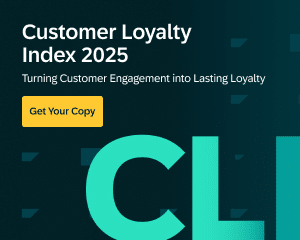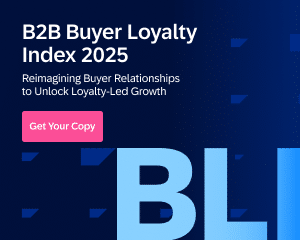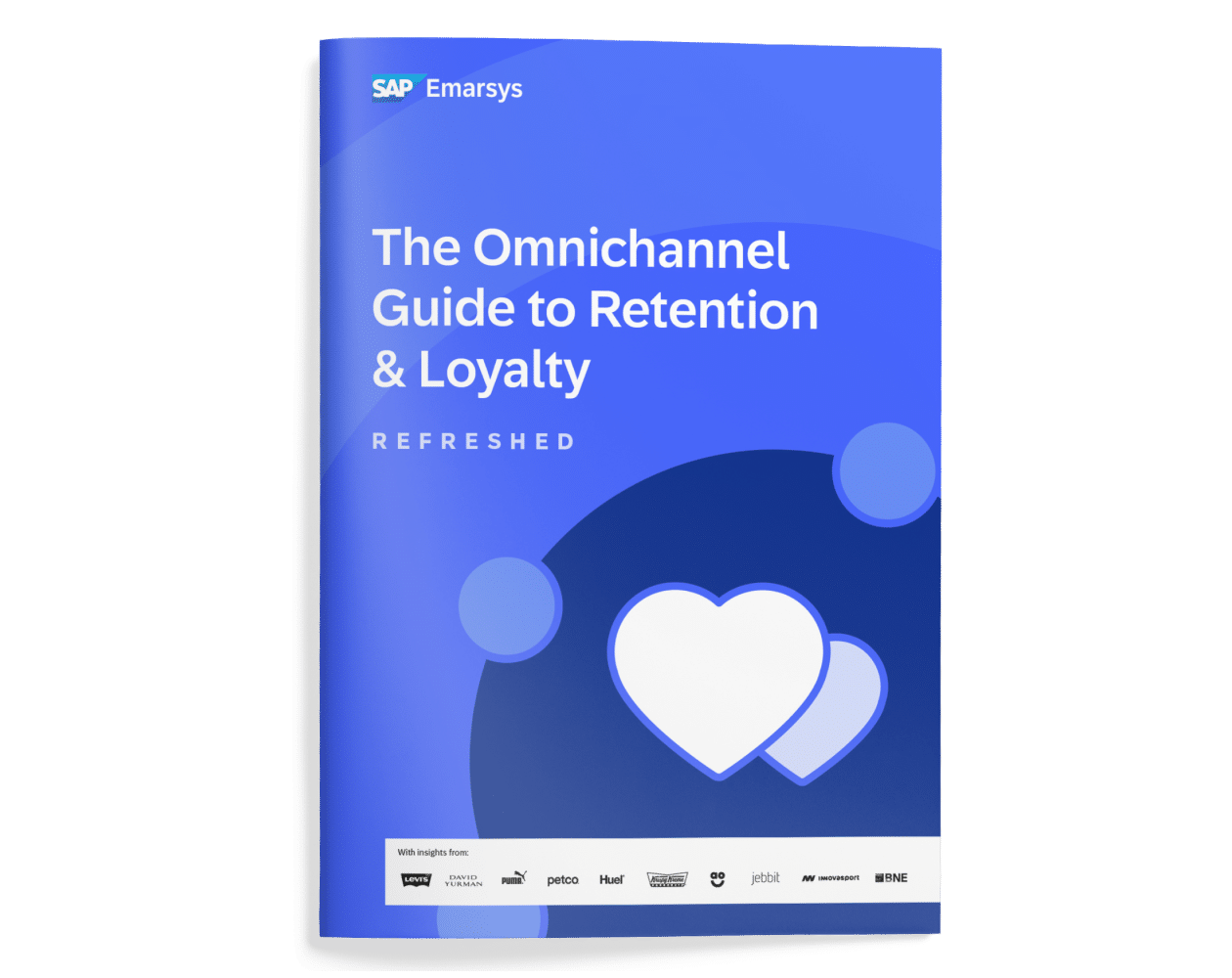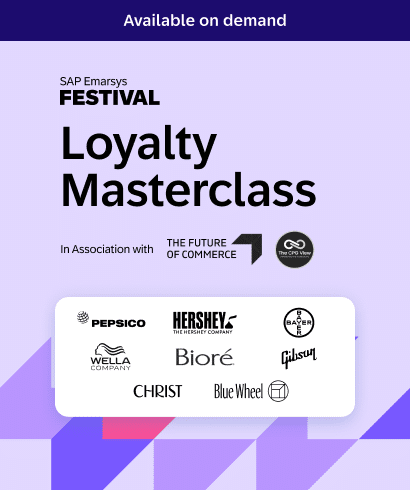When peak season hits, the pressure is on. Promotions are flying, inboxes are flooded, and many brands are laser-focused on one thing – driving sales. But while short-term revenue spikes are the goal for the majority, the smartest brands know that peak season does something even more valuable: it shapes customer loyalty for the year ahead.
Because what happens during major shopping seasons doesn’t stay there. If the experience is seamless, the checkout smooth, the follow-up thoughtful and personalized, customers remember. If it’s slow, clunky and disconnected, they remember that too.
If you want to build loyalty during peak seasons, you need to go beyond discounts and deliver connected experiences at scale, when demand for your products is at its highest.
In this article, we’ll explore how brands approach loyalty during peak seasons, and how you can turn seasonal shoppers into loyal customers who keep coming back. Let’s dive in.
Connect Your Data to Serve Customers at Scale
When the busiest shopping seasons arrive, gaps in your data become gaps in the customer experience. A shopper browsing online might see irrelevant offers. A loyalty member could go unrecognised at checkout. Someone who buys in-store might be treated like a first-time customer the next time they open your app. These are the moments that quietly push customers toward other brands.
A connected data strategy stops this from happening. When every interaction, from online to in-store, and mobile to email, feeds into a single customer profile, you gain a clear view of who each customer is and how they engage with your brand. This allows you to serve relevant offers, personalize messaging, and reward loyalty at scale, without skipping a beat.
If you’re looking to create this kind of connected experience, here’s where to start:
- Centralise your customer data. Bring together data from online, in-store, mobile, loyalty programs, and customer service into a single view.
- Link behaviour to identity. Connect browsing, purchasing, and engagement data to real customer profiles, not anonymous sessions.
- Unify your channels. Make sure email, SMS, app, web, and in-store channels are working from the same data, in real time.
- Activate that data. Use it to power personalised campaigns, loyalty triggers, and relevant recommendations across every touchpoint.
- Use the right platform. A solution like SAP Emarsys makes this possible without relying on manual processes or endless data wrangling.
What Home Depot did: Home Depot’s approach to peak season is a great example of connected data in action. Ahead of their busiest sales period, they captured customer preferences directly, asking shoppers what categories they cared about most. That data flowed into every channel, powering tailored promotions, real-time product recommendations, and loyalty offers across email, SMS, and their website. This strategy delivered eight times higher engagement on personalised campaigns and helped turn seasonal shoppers into long-term customers.
Map the Customer Journey for Peak Season Behavior
Customers behave differently during major shopping seasons. Decision-making speeds up, consideration windows shrink, and expectations skyrocket. The brands that succeed are the ones that anticipate this – and map customer journeys with peak season behavior in mind.
It starts by understanding the key moments that drive loyalty during busy periods. First-time purchases, cart abandonment, loyalty redemption, product discovery, and post-purchase engagement all look different when urgency is higher.
The needs of new customers and returning customers aren’t the same, and your journeys shouldn’t treat them like they are.
- New customers often arrive during peak with one thing in mind: the deal. They don’t need long nurture flows or brand stories up front. What matters is removing barriers to purchase — clear offers, fast checkout, and the confidence that they’re making the right choice. What happens next is where loyalty starts: a thoughtful post-purchase experience that welcomes them in and gives them a reason to come back.
- Returning customers show up with higher expectations. They already know your brand and expect to be treated like it. Whether it’s early access, personalised recommendations, loyalty perks, or frictionless service, their experience should reflect their history with you.
Journey mapping helps you plan for these moments. It allows you to build tailored experiences that respond to how customers shop during high-demand periods, not how they behave during quieter months.
What Home Depot did: This was a key part of Home Depot’s success. Their team designed peak-season journeys that started before the event even launched, capturing customer preferences early, then using that data to deliver personalised deals, category-specific recommendations, and loyalty rewards in real time.
Prioritise Experience-Led Loyalty Over Discounts
Discounts might grab attention during peak season, but they don’t build loyalty on their own. Customers remember the experience, not just the price.
This is where the strongest brands pull away from the competition. Instead of relying on deeper discounts or endless flash sales, they focus on delivering experiences that make customers want to return. That might be early access to sales, personalised recommendations, priority shipping, or exclusive loyalty perks that make shoppers feel valued, not just sold to.
The Omnichannel Guide to Retention and Loyalty highlights this shift clearly. More customers are motivated by convenience, personalisation, and recognition than by discounts alone. This is especially true during peak, when shoppers are overwhelmed with choice. A seamless checkout, relevant product suggestions, or a loyalty reward waiting in their account can be the difference between a one-time buyer and someone who sticks around.
What Home Depot did: Home Depot leans heavily into this strategy. By asking customers upfront what they care about, whether it’s gardening, tech, or home décor, they ensure that every promotion, every follow-up, and every message feels relevant. Right offer, right time, right context.

Use Smart Segmentation to Make Loyalty Personal
Peak season brings in a wave of new customers alongside your most loyal ones. Treat them the same, and you’ll miss the mark with both.
Segmentation is how you bridge that gap. Instead of broad, generic campaigns, you can serve each customer based on who they are, what they care about, and where they are in their relationship with your brand.
The most effective segments during peak often include:
- First-time seasonal shoppers: New customers drawn in by promotions. The goal isn’t just to convert them once, but to onboard them quickly with post-purchase journeys that introduce your brand, your products, and your loyalty program.
- High-value loyal customers: The ones who show up every season, know what they want, and expect to be treated like VIPs. They’re looking for early access, personalised offers, and fast, frictionless service.
- At-risk customers: Those who haven’t purchased in a while or showed signs of disengaging. Peak season is an opportunity to win them back with the right incentive or reminder.
- Gift buyers vs. self-purchasers: Their intent is different. A gift buyer needs different recommendations, messaging, and follow-up than someone shopping for themselves.
Understanding these differences is essential to delivering the right customer experience.
What Home Depot did: Ahead of peak, they capture both short-term intent (what category someone is shopping during the event) and long-term interests (gardening, DIY, technology, décor). That data feeds directly into their campaigns, powering more relevant offers, smarter loyalty engagement, and stronger post-sale retention.
Automate to Keep Loyalty Running – Even When You’re Busy
Peak season doesn’t leave much room for manual work. When the pressure’s on, automation is what keeps your loyalty strategy running, all without sacrificing personalisation.
The right automations ensure that every customer gets a timely, relevant experience based on what they’re doing right now. Whether someone makes their first purchase, redeems loyalty points, abandons a cart, or shops in-store, automation helps you respond instantly, even while your team is focused elsewhere.
If you want to deliver personalized experiences 24/7, you need these automations on your roster:
- Welcome flows for first-time shoppers: Making sure new customers feel acknowledged, understood, and invited back.
- Loyalty reward triggers: Sending reminders when customers are close to earning a reward, or nudging them toward the next tier.
- Post-purchase journeys: Recommending complementary products, sharing how-to content, or offering exclusive promotions based on what was just bought.
- Win-back automations: Re-engaging customers who haven’t interacted since the peak season ended.
What Home Depot did: This approach played a major role in Home Depot’s success. Their automated journeys kept working behind the scenes beyond first sale to onboard new customers, deliver personalised promotions, and guide customers toward their next purchase. Even during their busiest periods, their marketing stayed relevant, responsive, and effective.
Peak Season Is the Loyalty Test
Peak season puts every part of your customer experience to the test. The brands that win loyalty during these high-pressure periods are the ones that deliver consistent, personalised experiences, no matter how busy things get. That starts with connected data, thoughtful customer journeys, smart segmentation, and automation that keeps everything moving.
If you’re ready to turn peak demand into lasting customer loyalty, download The Omnichannel Guide to Retention and Loyalty. It’s packed with practical strategies, real-world examples, and insights to help you build loyalty that lasts.








